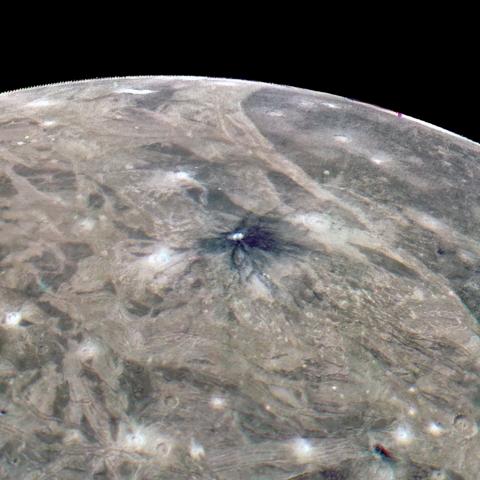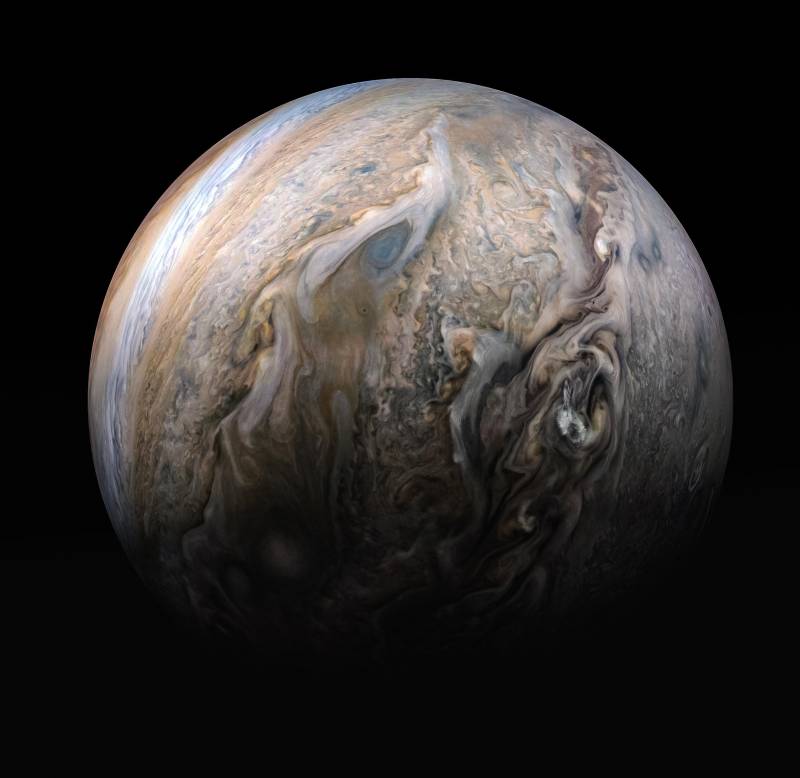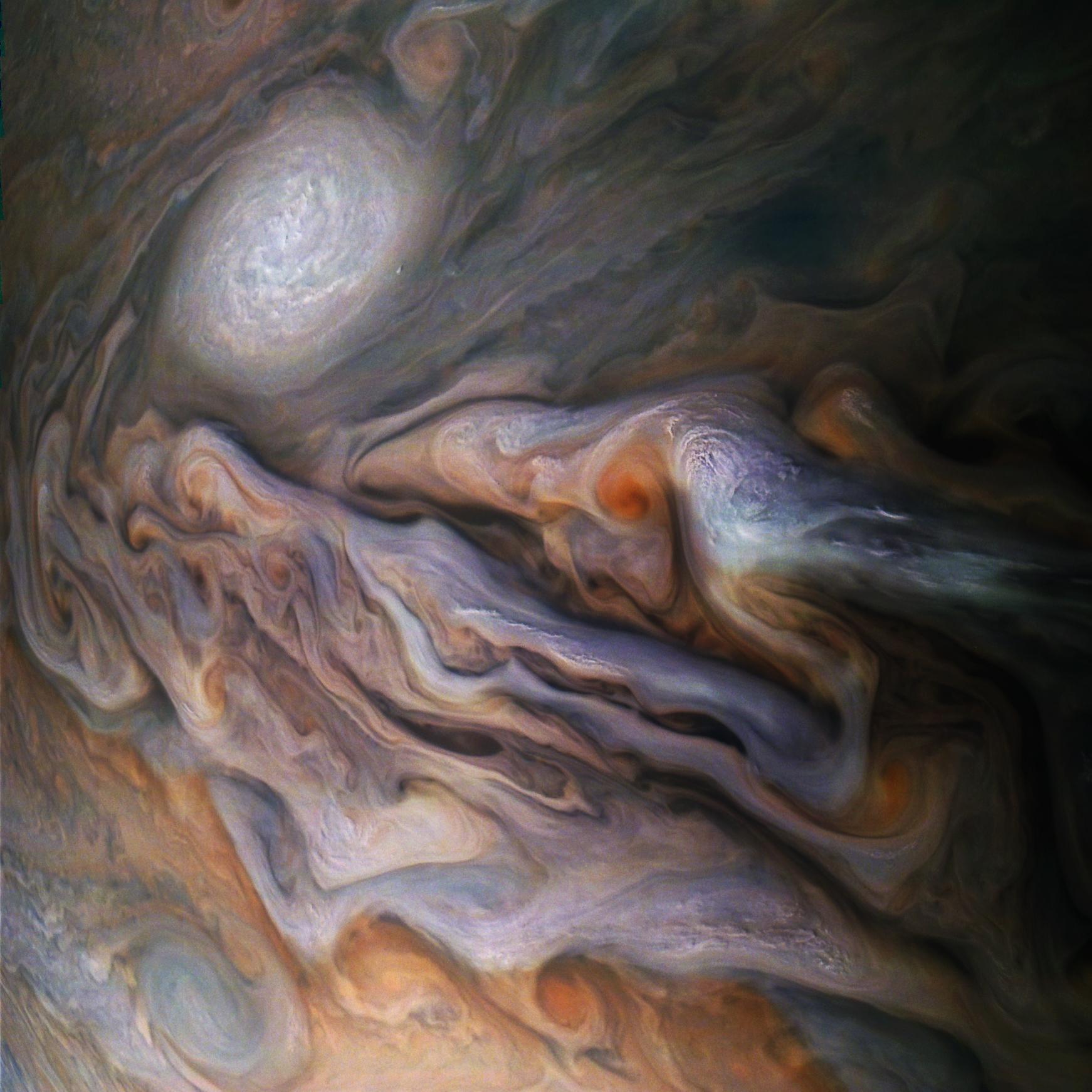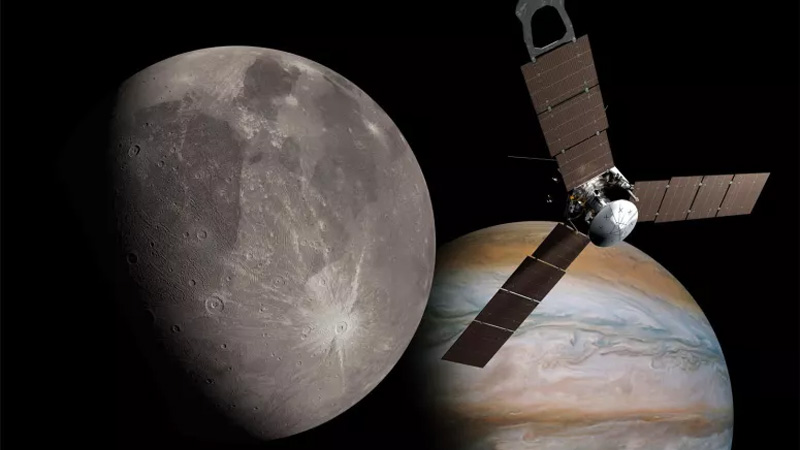Last June, NASA’s Juno spacecraft whizzed past Jupiter’s largest moon, Ganymede, zipping along at over 40,000 miles per hour. Juno swung within 645 miles of the moon’s surface — the closest any spacecraft has come to it in two decades.
As it flew by, Juno raked the moon for data with its cameras and host of scientific instruments.
One instrument in particular, called “Waves,” has delivered something beyond the dazzling imagery we’ve come to expect from solar system exploration: a 50-second sweep of magnetic measurements, later converted to audio frequencies.
The dynamic whistles and whirs of the soundtrack offer a rare opportunity to imagine ourselves exploring deep space in person, via the telepresence of a robot.
We’ve heard direct recordings of sound from different places in the solar system before, like the atmosphere of Saturn’s moon Titan as the Huygens probe descended, or the winds of Mars heard by the Perseverance rover.
But in this case, Juno’s “ear,” the Waves instrument, measures the properties of magnetic fields the spacecraft passes through, giving us the chance to hear something normally inaccessible to human senses.

Moonlighting at Ganymede
Juno’s primary mission is to explore the planet Jupiter, but NASA often takes advantage of serendipitous encounters to explore more. On June 8, 2021, the close flyby of Ganymede created an opportunity for some side work beyond the mission routine.
Ganymede is the largest moon in the solar system and the only one to possess a significant global enveloping magnetic field — a magnetic field that extends from the moon into space. This is a feature that even the planets Venus and Mars do not possess. If Ganymede orbited the sun instead of Jupiter, it would be considered a planet, larger even than Mercury.
Ganymede’s mystery runs below its icy, cratered, cracked surface. Hidden beneath that frosty shell may be an ocean, one that contains more water than all of Earth’s. This alone ranks Ganymede as prime real estate for the search for extraterrestrial life, like other tantalizing moons where we have detected the presence of liquid water — Jupiter’s Europa and Saturn’s Enceladus.

Juno’s batch of flyby data most likely won’t discover extraterrestrials, but magnetic and other data collected by instruments like Waves may provide insights into the ocean lurking beneath Ganymede’s crust, such as its depth, volume, salinity and other properties.
Juno’s day job
NASA launched Juno a decade ago on a mission to explore Jupiter, to give us our first-ever look at the gas giant’s mysterious polar regions, and to probe its interior by measuring its magnetic and gravitational fields.
Since arriving in 2016, Juno has circled the giant planet on an elongated orbit that sends it buzzing close to Jupiter’s polar regions every 53 days, cruising to within 2,100 miles of its cloud tops, arguably one of the most stunning vista points in the solar system.
From this vantage, Juno has captured thousands of captivating images of Jupiter’s colorful cloud belts, swirling storm systems and auroras. And we have glimpsed processes and structures of the planet’s interior that may help scientists understand how Jupiter originally formed and evolved.

For example, some of Juno’s major discoveries include: insights into a mysterious magnetic anomaly near Jupiter’s equator, called the Great Blue Spot; similarities in patterns between Jupiter’s swirling cyclones and vortices in Earth’s oceans; and detailed imagery of the thin ring of dust encircling Jupiter and its relationship to the two tiny moons Metis and Adrastea.
The Future of Juno
NASA has extended Juno’s mission through September 2025, so more discoveries about the king of planets and its entourage of amazing moons are sure to come. Whether the solar-powered spacecraft will survive Jupiter’s deadly radiation belts until then remains to be seen, but for now we can continue to enjoy the grand vista.
